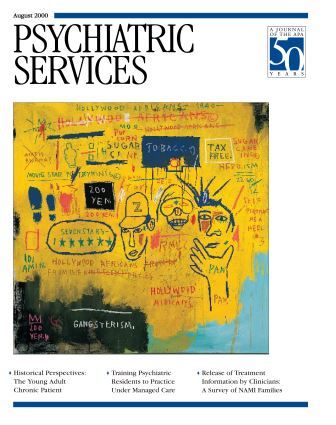Homelessness Among Persons With Serious Mental Illness in an Enhanced Community-Based Mental Health System
Abstract
OBJECTIVE: Homelessness and patterns of service use were examined among seriously mentally ill persons in an area with a well-funded community-based mental health system. METHODS: The sample consisted of 438 individuals referred between 1990 and 1992 to an extended acute care psychiatric hospital after a stay in a general hospital. Those experiencing an episode of homelessness, defined as an admission to a public shelter between 1990 and 1993, were compared with those who were residentially stable. Data from a longitudinal integrated database of public mental health and medical services were used to construct service utilization measures to test the mediating effect of outpatient mental health care on preventing homelessness. RESULTS: A homelessness rate of 24 percent was found among the 438 persons with serious mental illness. Those who experienced homelessness were more likely to be African American, receive general assistance, and have a comorbid substance abuse problem. They used significantly more inpatient psychiatric, emergency, and health care services than the subjects who did not become homeless. Forty to 50 percent of the homeless group received outpatient care during the year before and after their shelter episode. The number of persons who received intensive case management services increased after shelter admission. CONCLUSIONS: An enhanced community-based mental health system was not sufficient to prevent homelessness among high-risk persons with serious mental illness. Eleven percent of this group experienced homelessness after referral to an extended acute care facility. Strategies to prevent homelessness should be considered, perhaps at the time of discharge from the referring community hospital or extended acute care facility.



